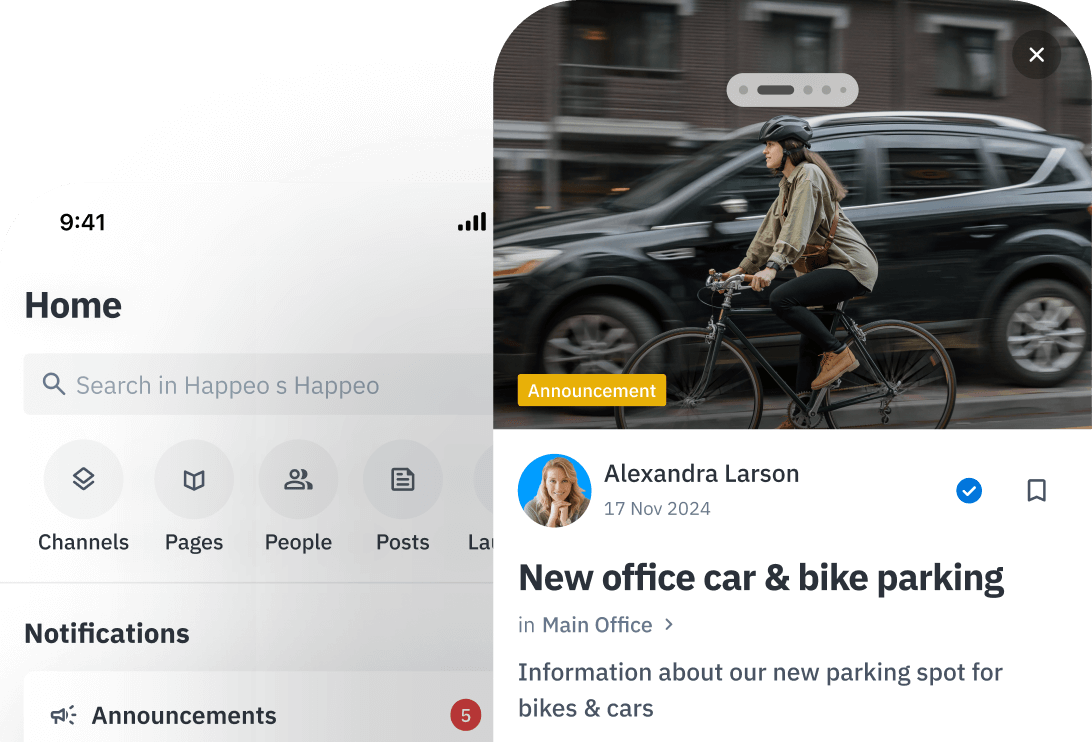Future of Remote Work: How Can Businesses Support a Global Workforce?

Start building your digital home with Happeo
Request a demo
Product
Features
Solutions
Happeo for
Use cases
Resources
Explore
Support
Happeo For
Use cases
Comparisons
Explore
Support
Recent
If you are a business with a global workforce, then you are already dealing with your fair share of remote work monitoring issues. That’s why you are browsing this post to find a solution. If that’s the case, then by the end of today’s post, you will have the best solutions and strategies to support your international human resources and skyrocket their workflows and productivity. Today, we will cover a little bit about why remote work a top priority, the challenges that hinder the full potential of a global workforce, and effective strategies to support and maximize their performance.
Remote work or work-from-home or anywhere as we commonly know it is here to stay. Now, all of us are aware of how it became the most preferred working model worldwide. Yes, the dreadful coronavirus pandemic, global lockdown, and all that gave remote work the limelight. Although it was there before the pandemic as well.
The shift to remote work is due to multiple aspects. These include advanced technology implementation, the thing of 2020 that everyone wants to forget, and changing employee expectations. As per our knowledge and expertise, we have identified that most employees prefer working from anywhere and have decided to resign if they are forced to return to the office environment.
Besides there are many benefits of remote work, which business owners have realized including infrastructure cost savings and global expansion and brand reach due to a global workforce. Overall, both employees and employers have embraced remote work and are availing of its benefits.
These are not only the challenges of monitoring a remote or global workforce but also the cons that your work-from-home employees face daily. Fortunately, as big as these problems seem, the solutions to overcome them are very simple and within your reach and budget. However, you need to first understand, what these disadvantages are.
The first issue is that your remote workforce is spread across different time zones and locations. Thus, it becomes very difficult for your teams to come together to get updates, meetings, or share essential work details.
For example, in a global workforce setting where you have employees in India and the USA, while some people are hard at work, others are getting a much-deserved shut-eye. This is happening simultaneously and finding a common ground thus becomes difficult.
Even if you have the right communication tools communicating with your employees and teams across multiple countries can be difficult. This can be due to:
Plus, regularly flying to multiple countries is very expensive, even for large-scale enterprises. Due to this issue, multiple problems can occur such as misunderstandings, only a few employees being updated on the latest information, and delayed messages.
Plus, multiple reports can be confusing. Overall, all this can incur a heavy cost as the work can slow down and come to a complete standstill.
Maintaining an office environment and organizational professional culture is essential for success and growth. However, due to geographically spread out employees and teams, doing so is a seemingly impossible task.
On the other hand, in an in-office work model, it’s much simpler to conduct regular employee training sessions and team-building exercises. However, when the workforce is global, organizational culture elements such as these have to be virtual, which is very complex.
Lastly, monitoring and managing the work of a global workforce is a nightmare. As we mentioned before, flying to multiple countries regularly is expensive. What you can do is call these employees daily to get updates. However, who will do your work then? Overall, it’s tough, even for the most experienced leaders to manage a global workforce without external help.
Now we are done with the challenges of managing a global workforce. They seem complex to solve. Right? Not if you know the top strategies for the same. So where can I find them? You ask. Right here in this section of our post. We confidently reply.
By technology, we mostly indicate implementing and properly using advanced remote work monitoring and employee monitoring software. These tools and applications come equipped with many features and functionalities including:
Moreover, did we mention that even the most remote work monitoring software solutions are affordable?
An issue we talked about remote workforce management is multiple time zones and locations and finding a common ground for teamwork is complex. Now, these factors are inevitable. However, what’s not is that you can always provide your remote teams and employees with flexible schedules that:
When it comes to global teams and employees, you can never take complete charge of the workflow and processes. Thus, it’s better to focus more on results. A tip here is that you can always take monthly virtual meetings to identify and fix obstructions, work gaps, flaws, and non-productive workflows.
When it comes to training and developing global teams and employees, the only different thing is that all these sessions are online and/or virtual.
With that, we are done putting our post for today’s title, Future of Remote Work: How Can Businesses Support a Global Workforce under wraps. To give you a final word, we can say that working remotely comes with its fair share of pros and cons, one of them being employee monitoring issues. Employers need to understand both and implement the most ideal strategies to create a workflow and environment that boosts efficiency, productivity, and profitability while taking charge and authority over their teams to bring them together and maintain work integrity for success and growth.